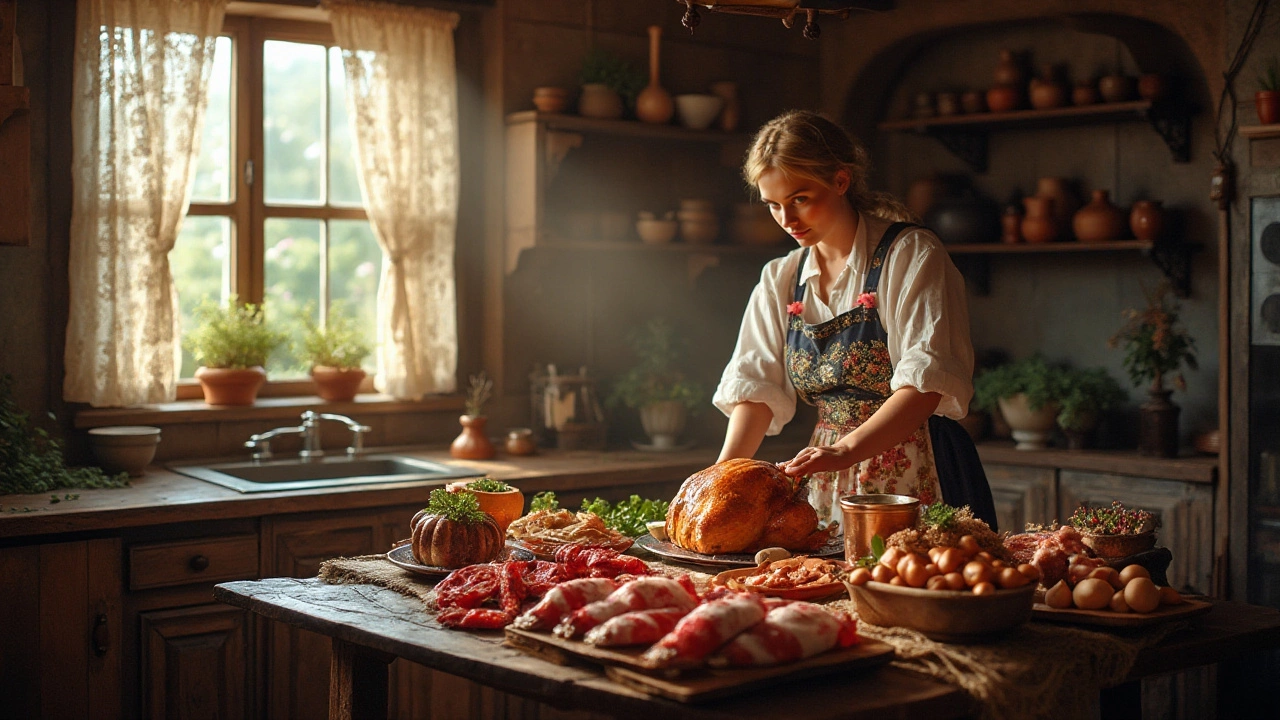Russian Meat Dishes: Classic Recipes and Simple Tips
If you love comfort food, Russian meat dishes are worth a try. They blend bold flavors, simple ingredients, and slower cooking methods that turn everyday cuts into tender, tasty meals. Below you’ll find the most popular dishes, quick cooking hacks, and ideas to keep the meals authentic but still easy for a home kitchen.
Popular Russian Meat Dishes
Beef Stroganoff – thin strips of beef sautéed with onions, mushrooms, and a sour‑cream sauce. Serve over egg noodles or rice for a creamy finish.
Pelmeni – tiny dumplings stuffed with ground pork, beef, or a mix. Boil, then top with butter, sour cream, or a splash of vinegar for a satisfying bite.
Shashlik – marinated cubes of lamb, pork, or beef threaded on skewers and grilled over charcoal. The secret is a simple vinaigrette of oil, garlic, onion, and a pinch of cumin.
Golubtsy (Stuffed Cabbage Rolls) – cabbage leaves wrapped around a mixture of ground meat, rice, and herbs, then simmered in a tomato‑based broth.
Kotleti (Russian Meat Patties) – minced meat mixed with soaked bread, onion, and milk, shaped into patties, and pan‑fried until golden.
Cooking Tips for Authentic Flavor
Start with good quality meat. Even a modest cut tastes better if it’s fresh and not overly processed. For stews like stroganoff or golubtsy, brown the meat first; that caramelized layer adds depth.
Don’t skip the aromatics. Garlic, onion, and dill are staples in Russian kitchens. Chop them finely and sweat them before adding meat to release their full flavor.
Use sour‑cream or kefir where recipes call for tang. If you’re out of sour‑cream, plain yogurt with a thin drizzle of lemon juice works as a substitute.
Low and slow is the rule for most braised dishes. Let the pot simmer gently – rapid boiling can toughen the meat.
When making pelmeni, keep the dough thin but sturdy. A rolling pin or a pasta machine set to a thin setting gives the best results. Freeze uncooked pelmeni on a tray before transferring to a bag; they’ll keep longer and cook evenly.
For shashlik, a short 30‑minute marination is enough, but if you have time, let it sit overnight. The acidity from vinegar or lemon juice breaks down muscle fibers, keeping the meat juicy.
Finish each dish with a fresh herb sprinkle – dill, parsley, or chives brighten the plate and add a classic Russian touch.
Try serving with simple sides like boiled potatoes, buckwheat groats, or a crisp cucumber salad dressed with sour‑cream and dill. These sides balance the richness of the meat and round out the meal.
Now you’ve got the basics. Pick a dish, gather the ingredients, and enjoy the warm, hearty flavors that have fed Russian families for generations. Happy cooking!
Exploring Russian Cuisine: What Types of Meat Do Russians Eat?
Russian cuisine offers a fascinating variety of meats, with chicken holding a special place due to its versatility and presence in numerous traditional dishes. From hearty stews to creative clay pot recipes, Russians have a profound appreciation for integrating chicken into their daily meals. This article delves into the types of meat consumed in Russia, highlighting chicken's role and offering insights into traditional Russian chicken recipes. Discover cultural influences, popular cooking techniques, and tips for creating authentic Russian chicken dishes.
